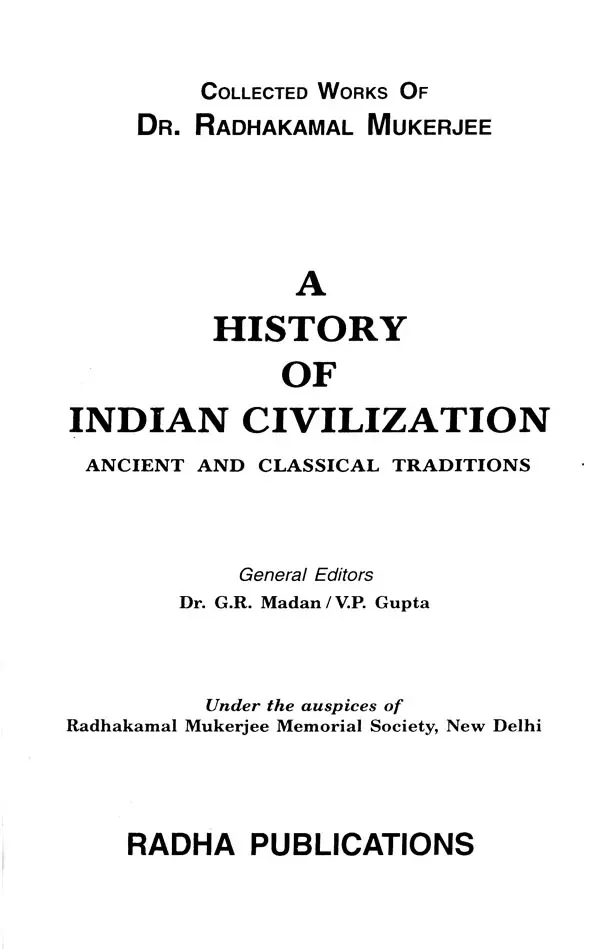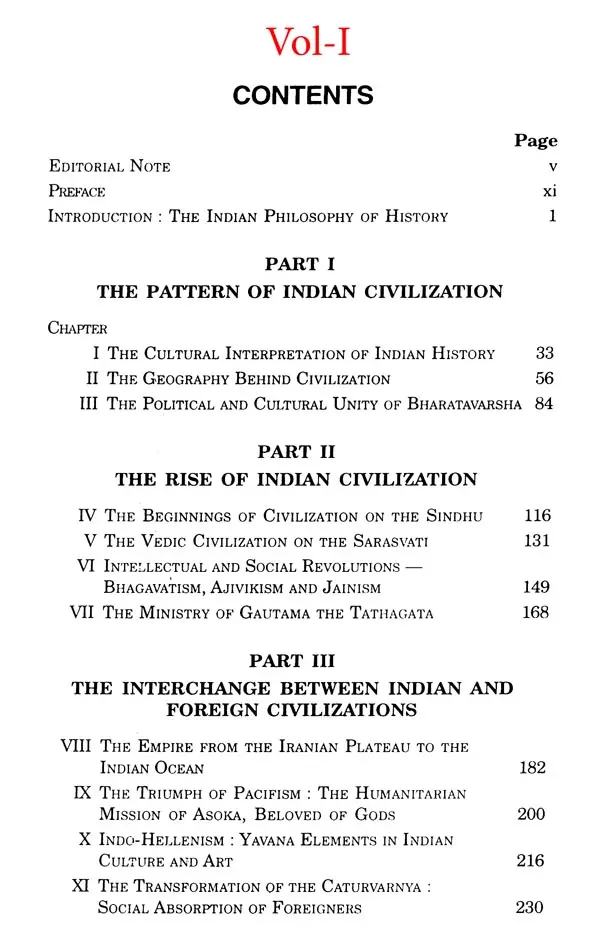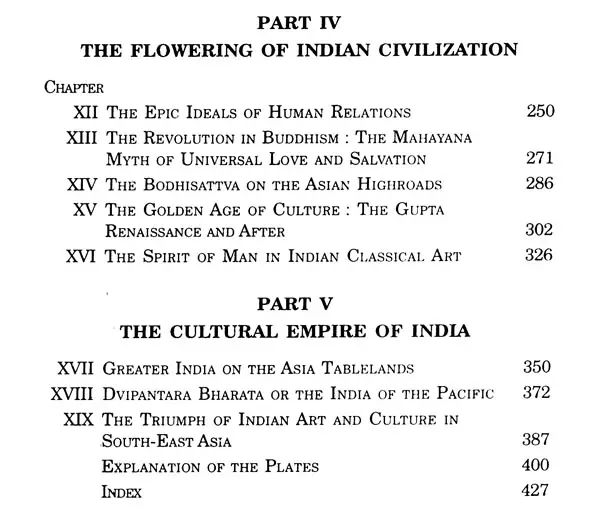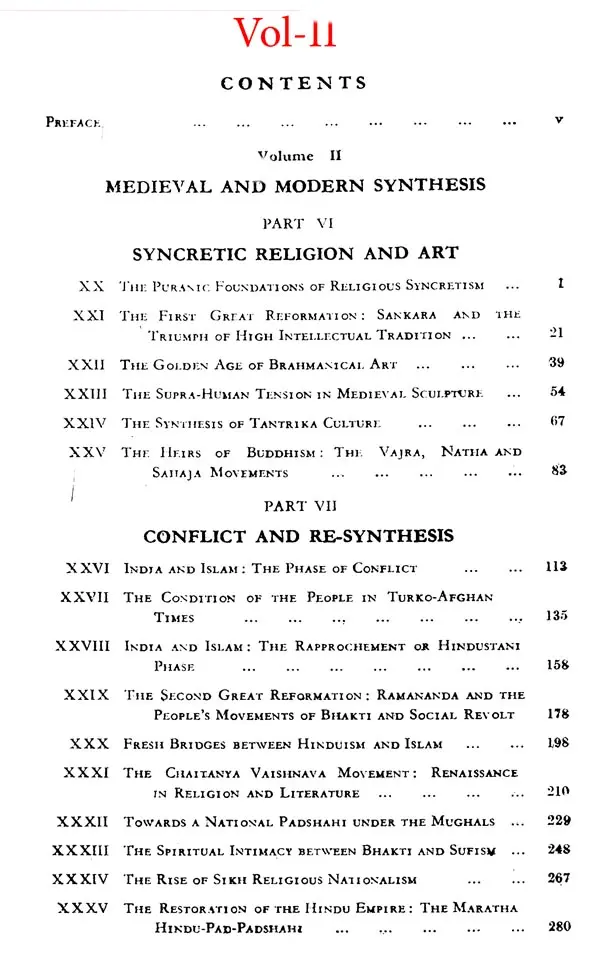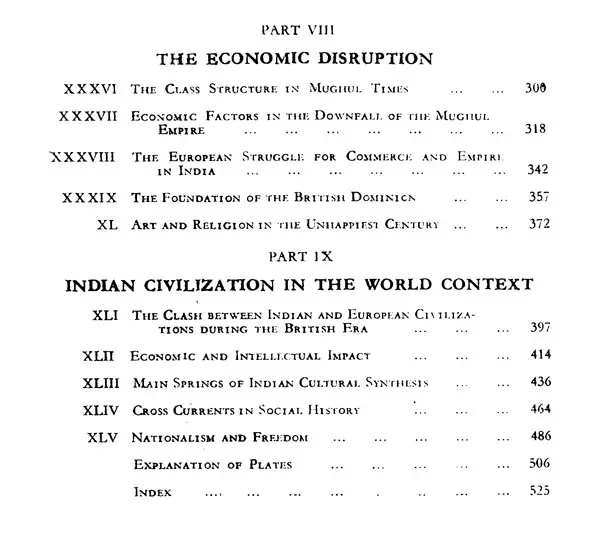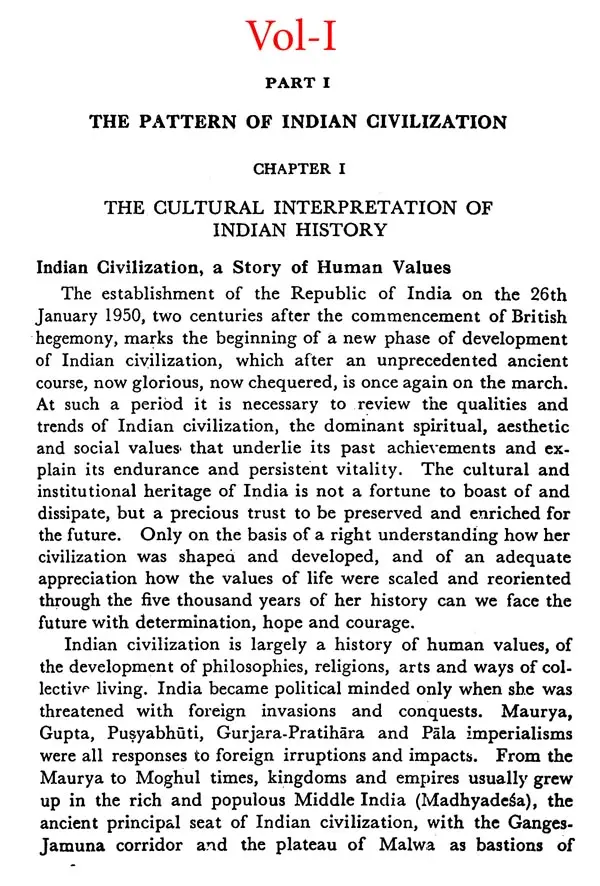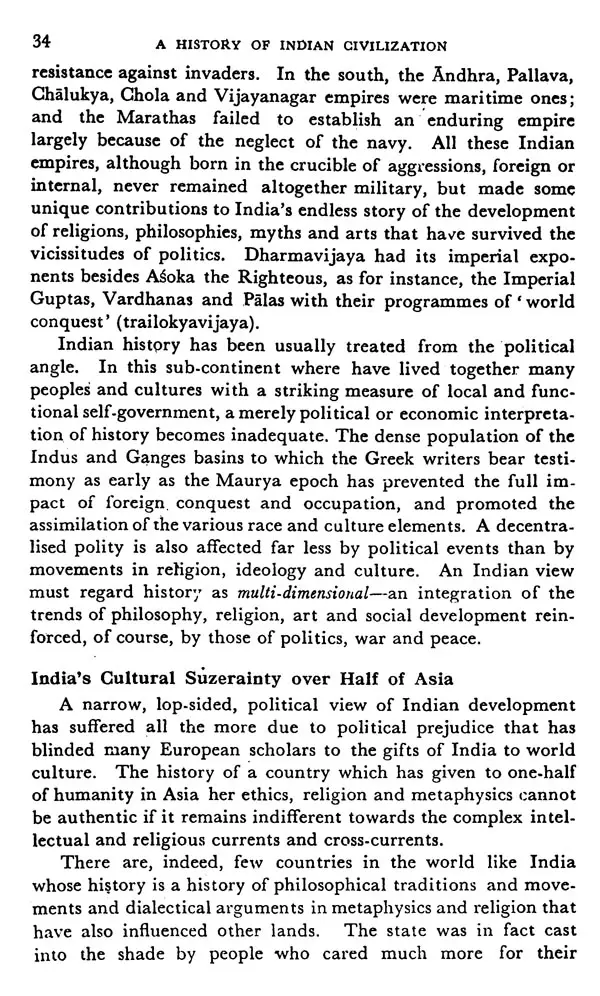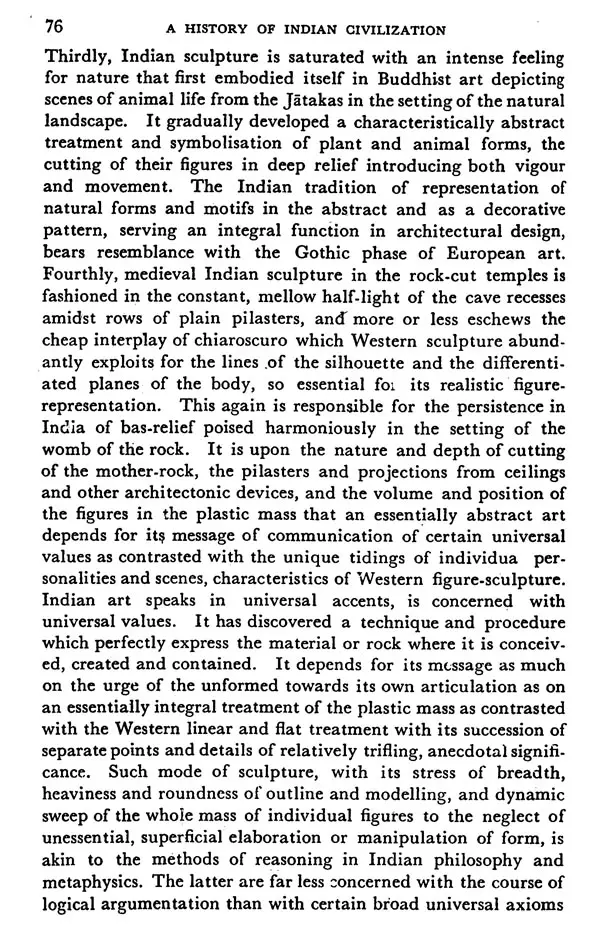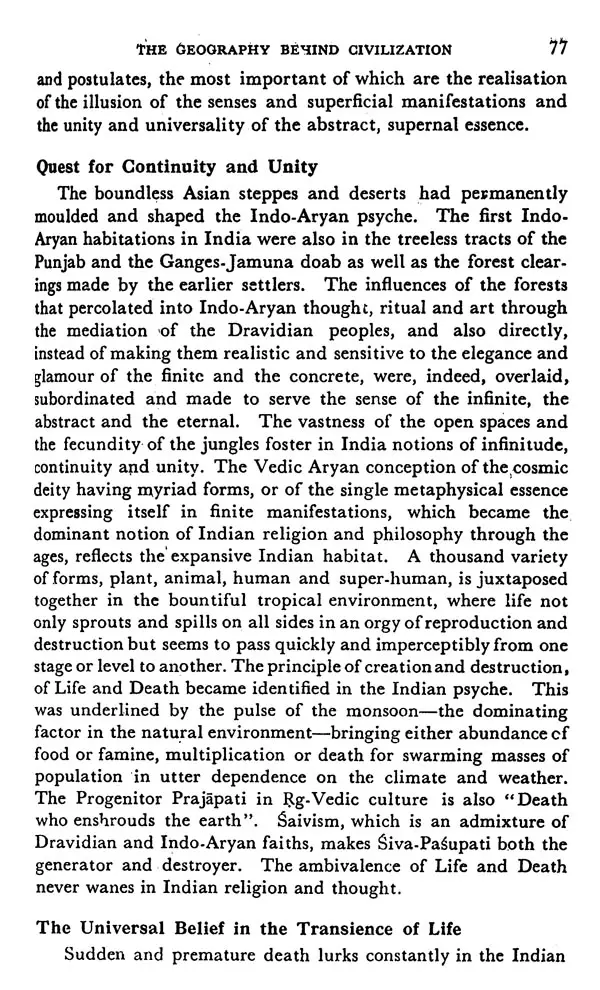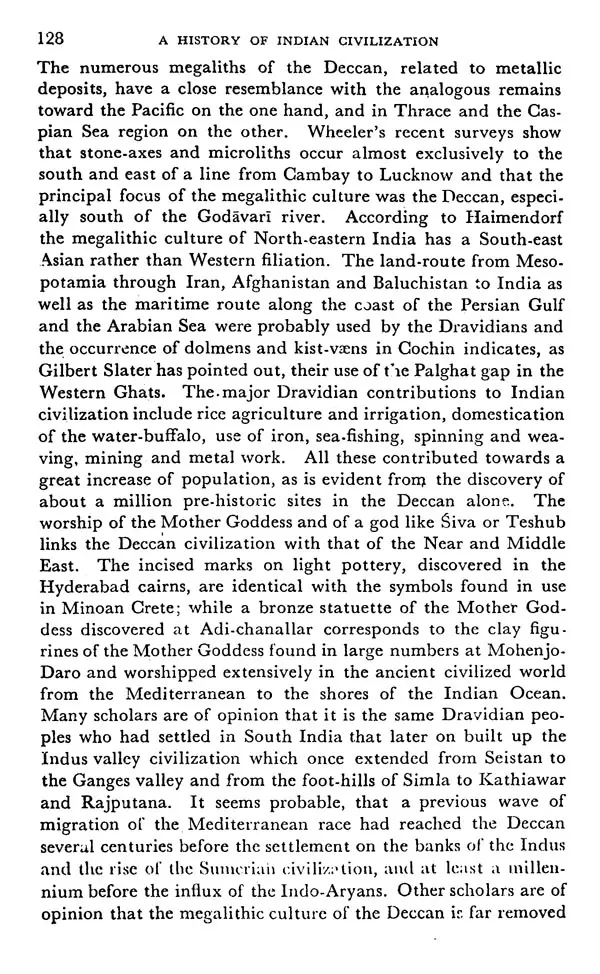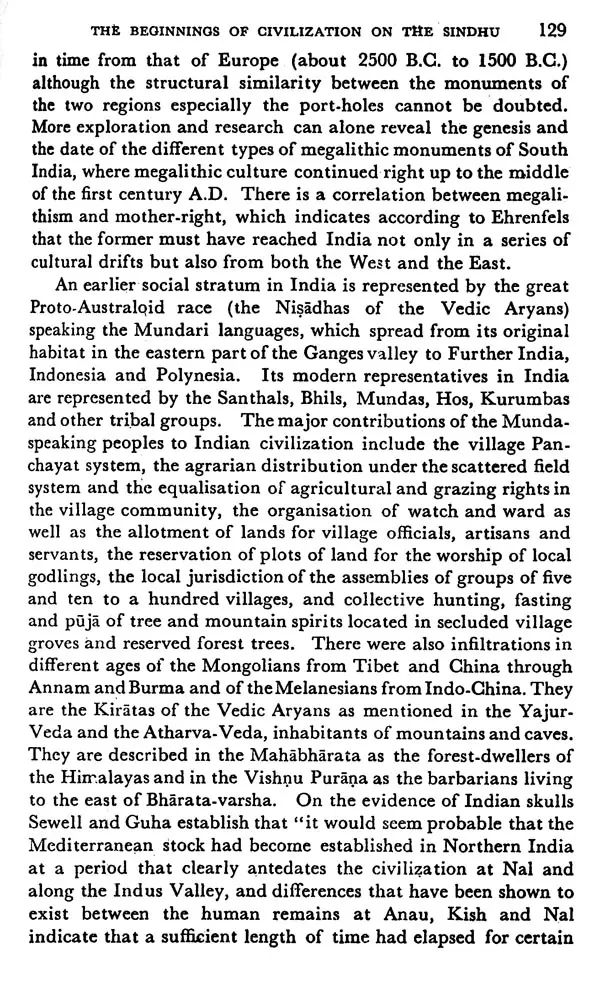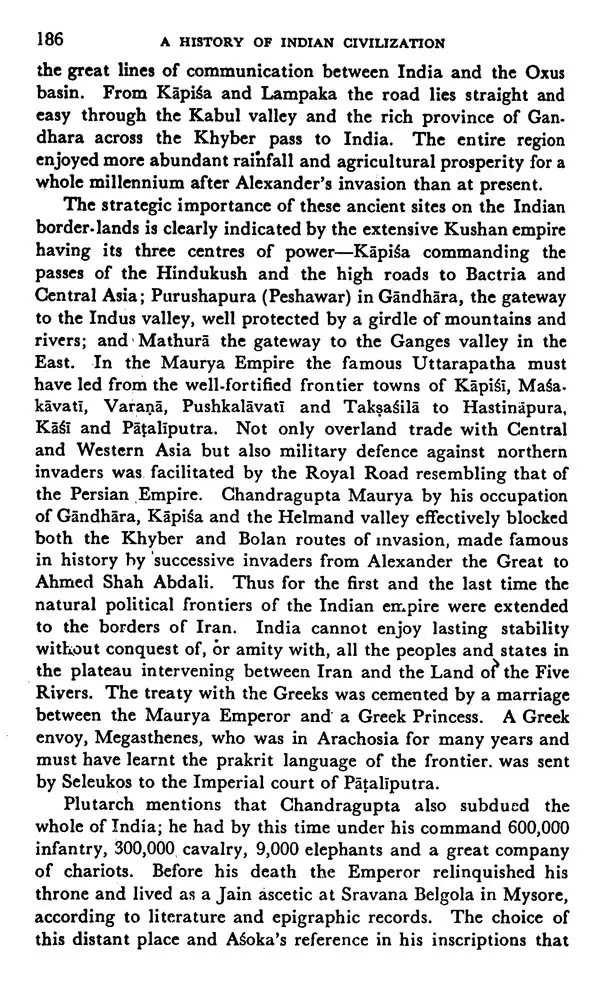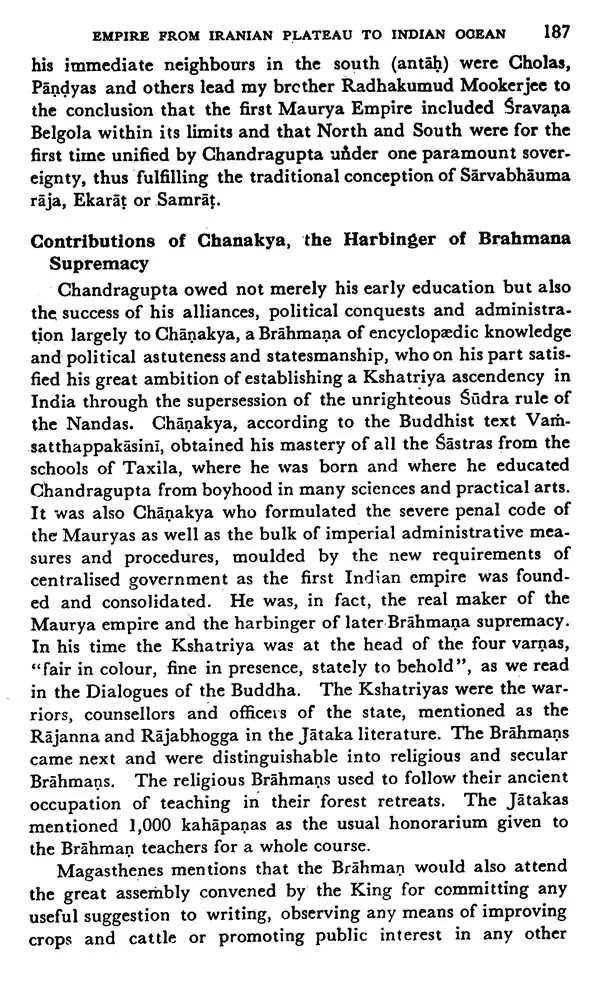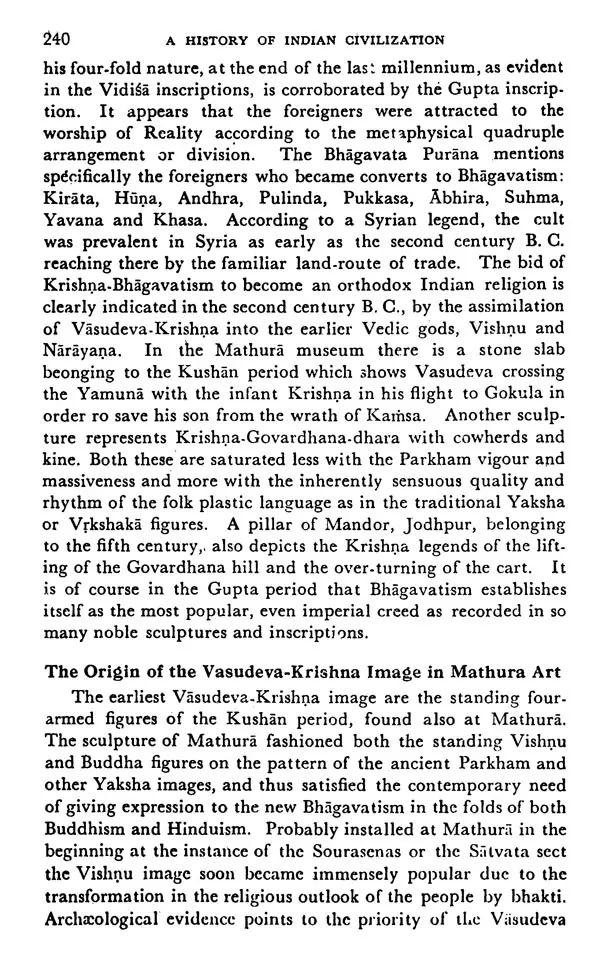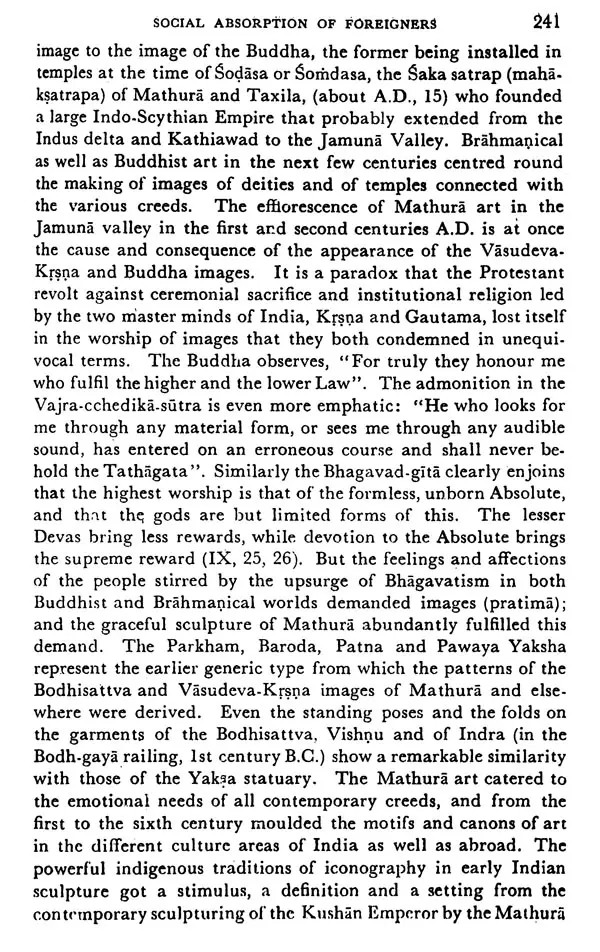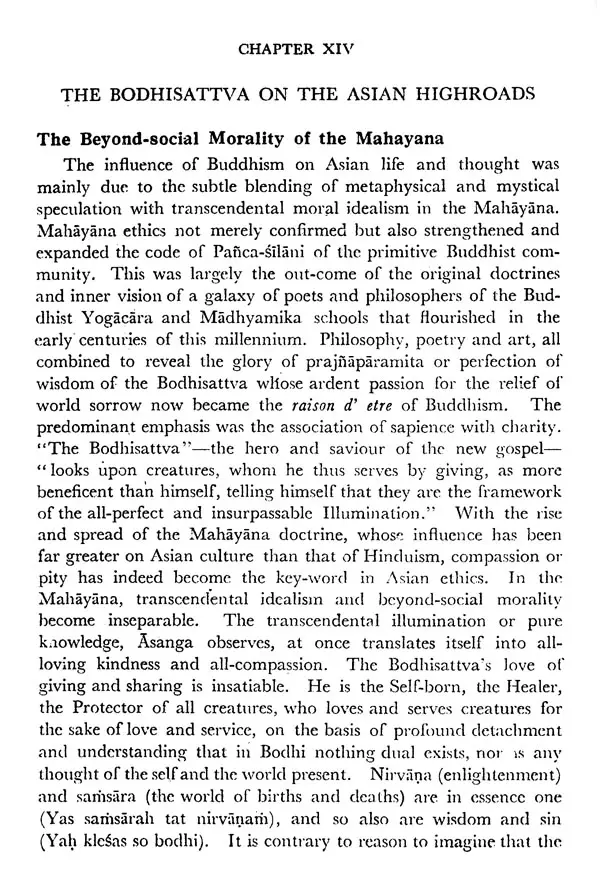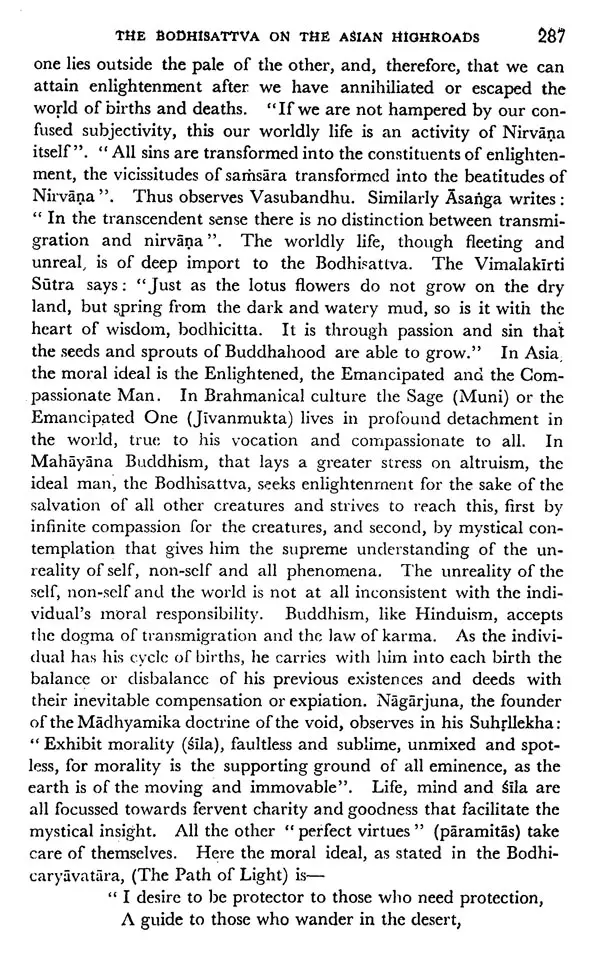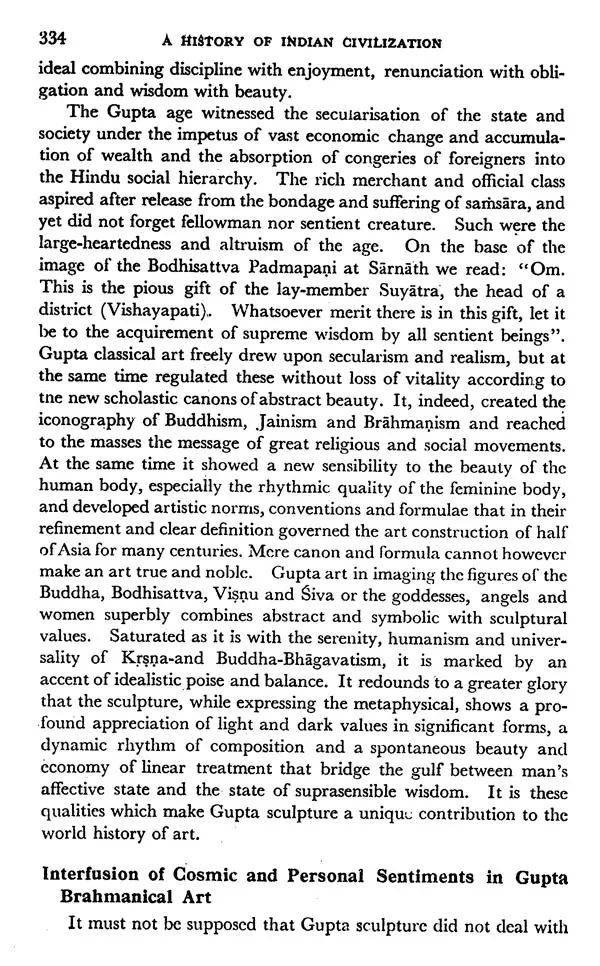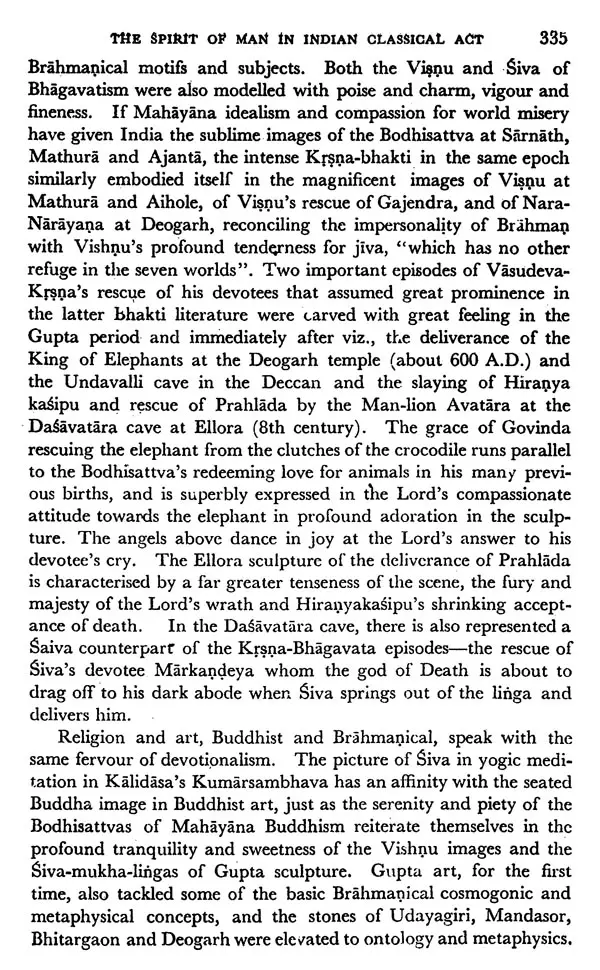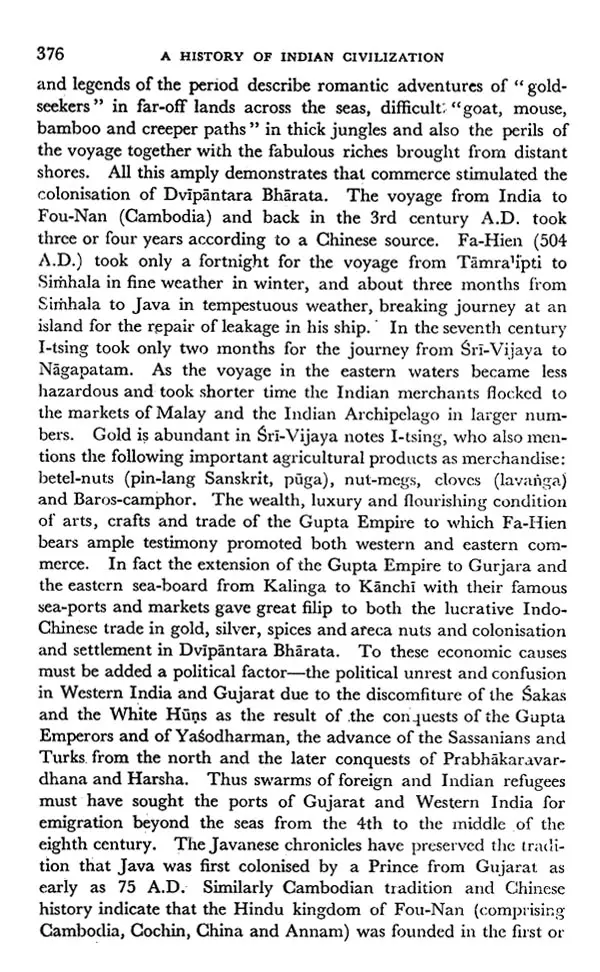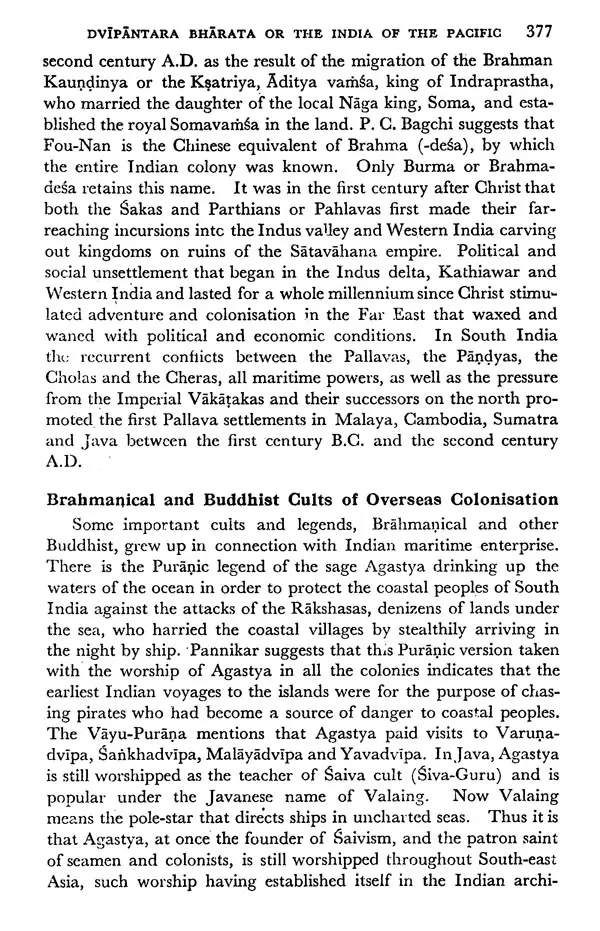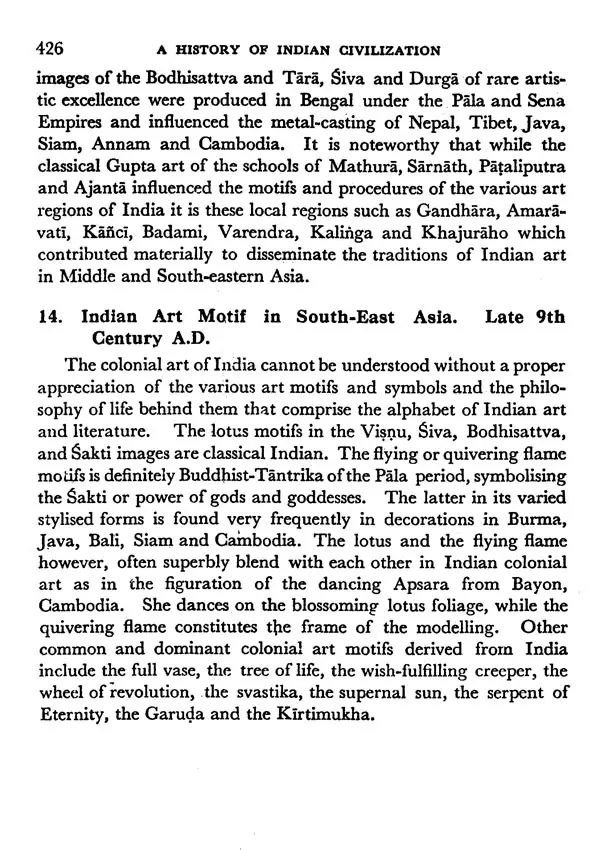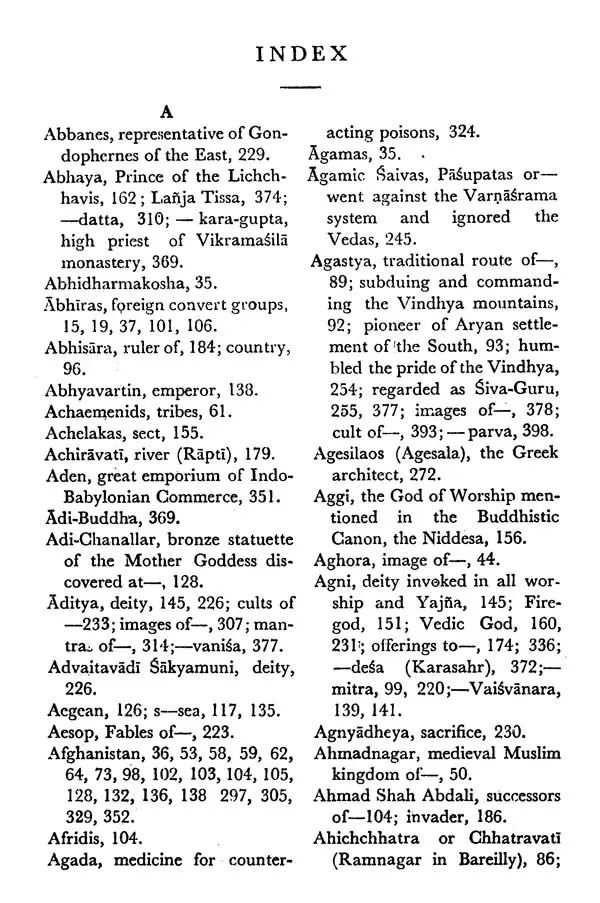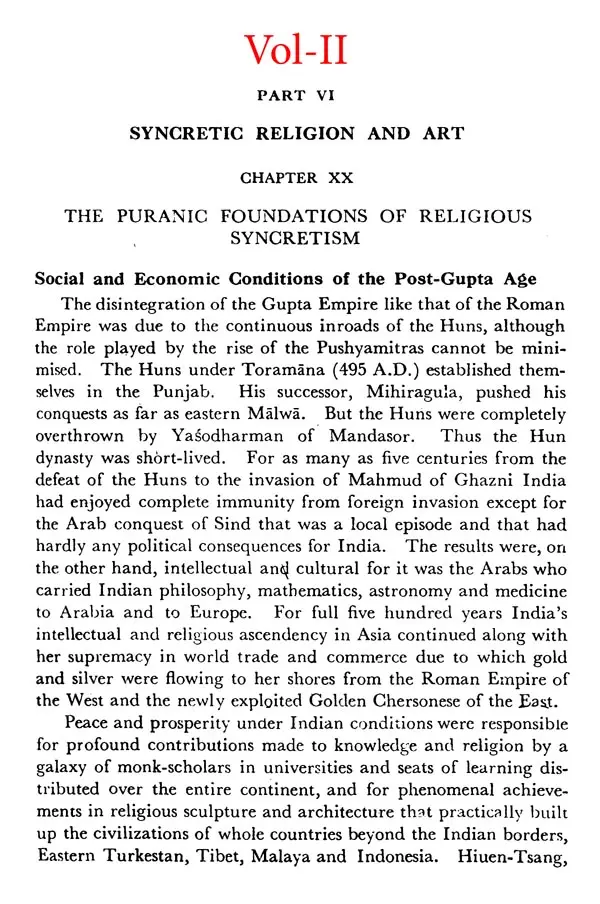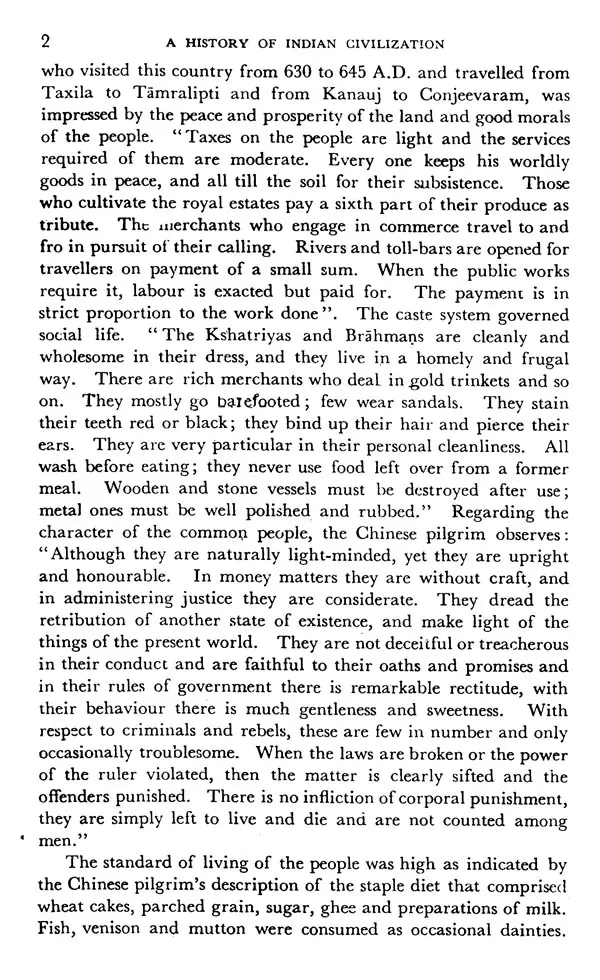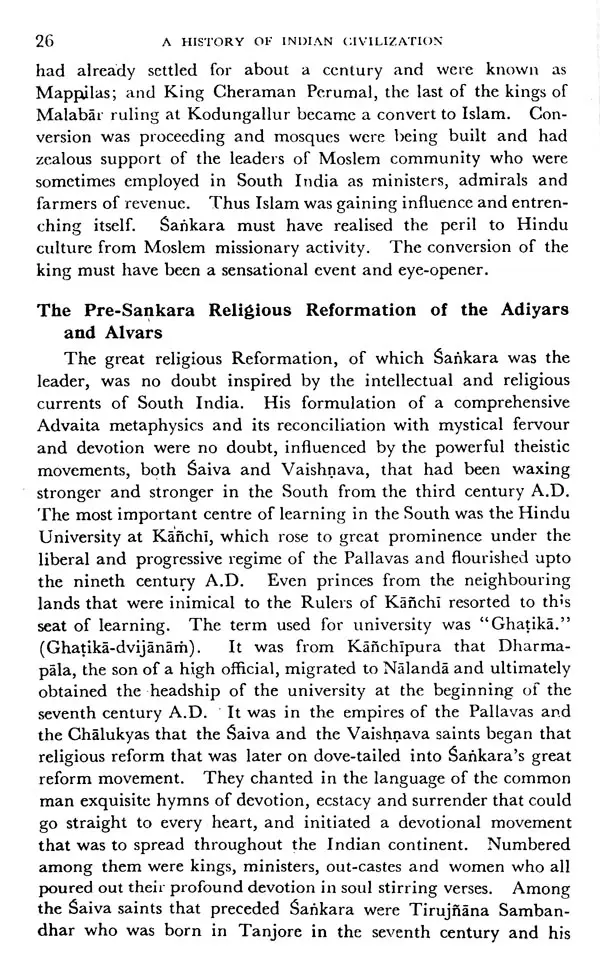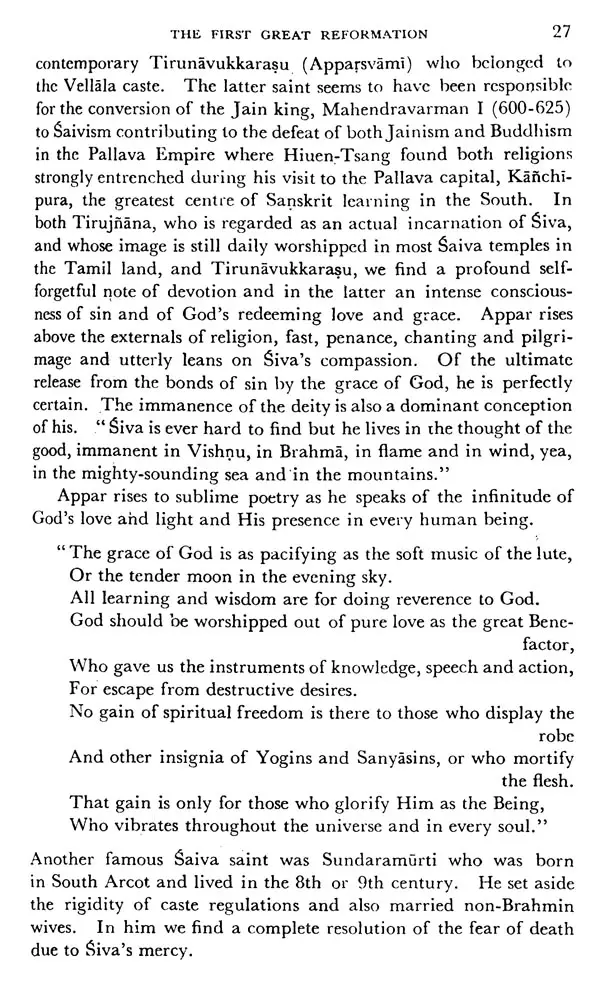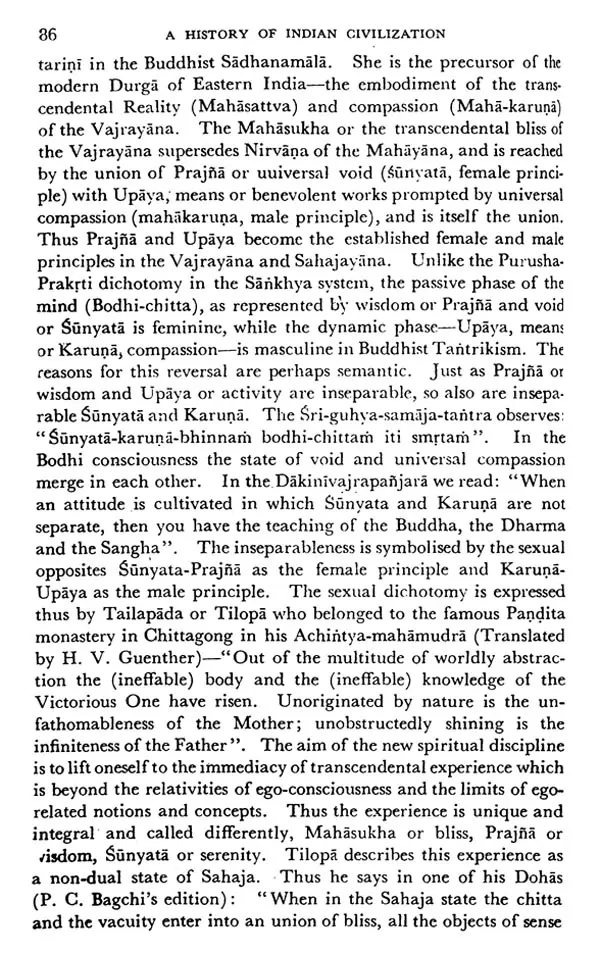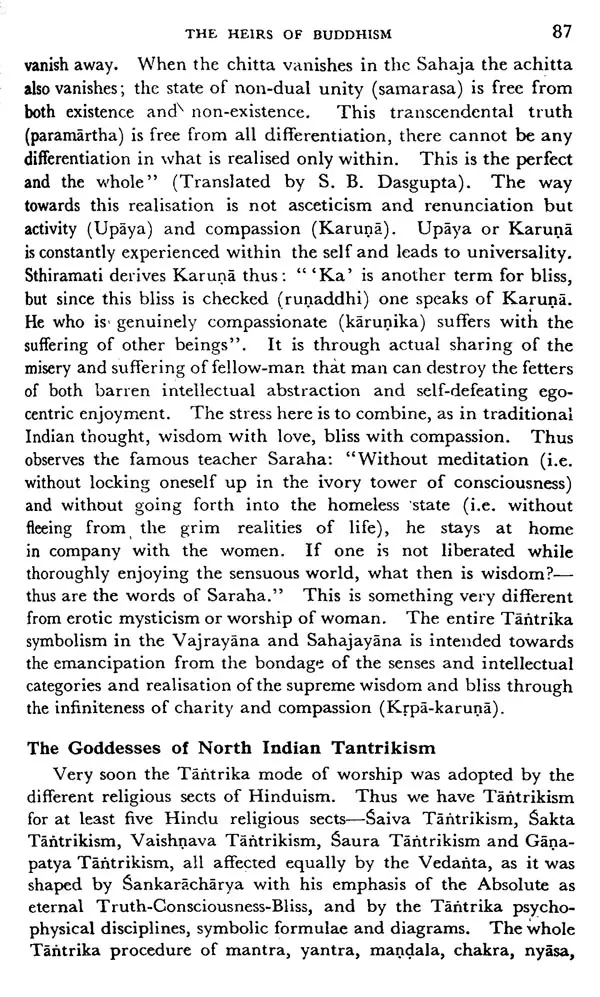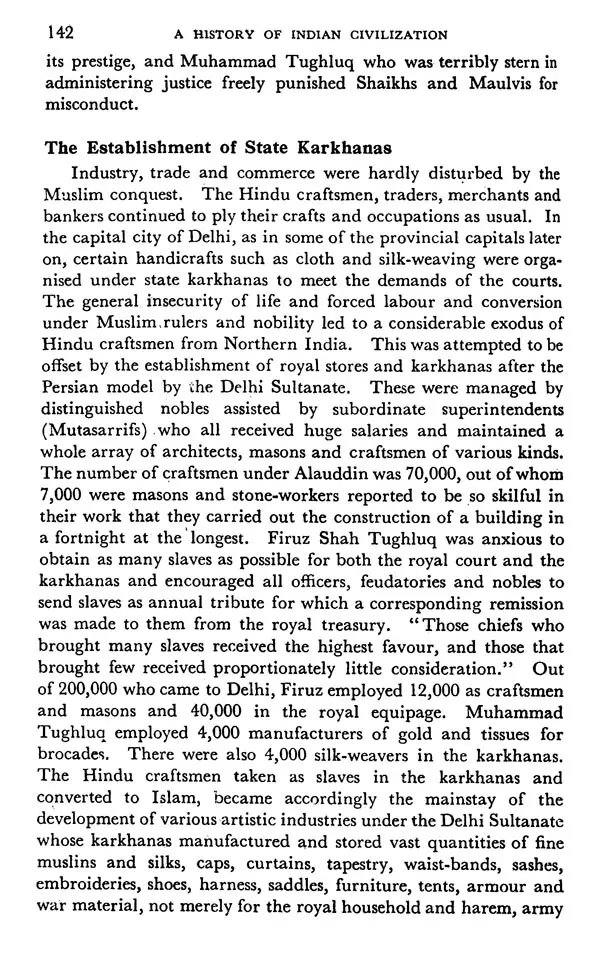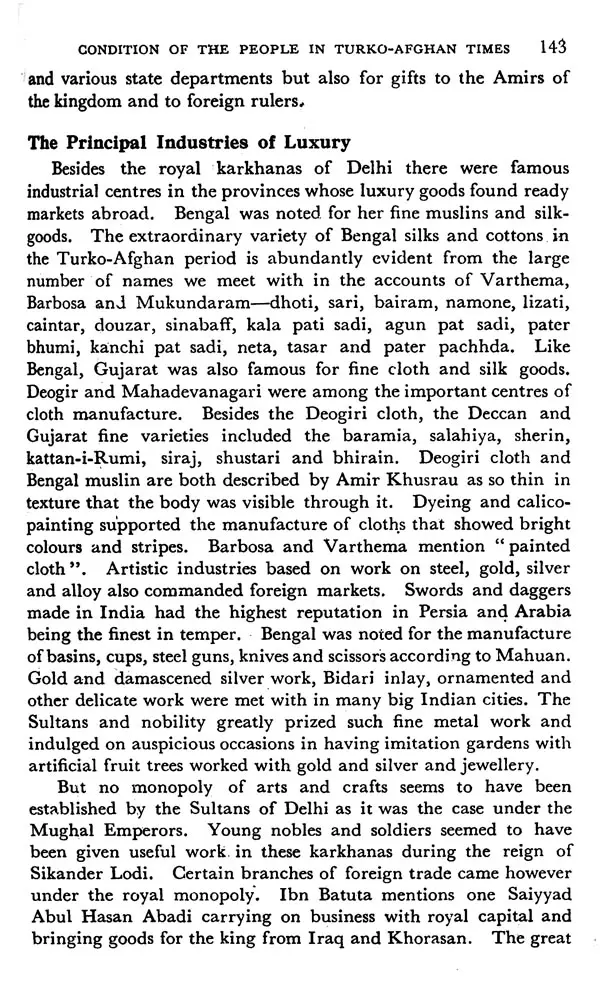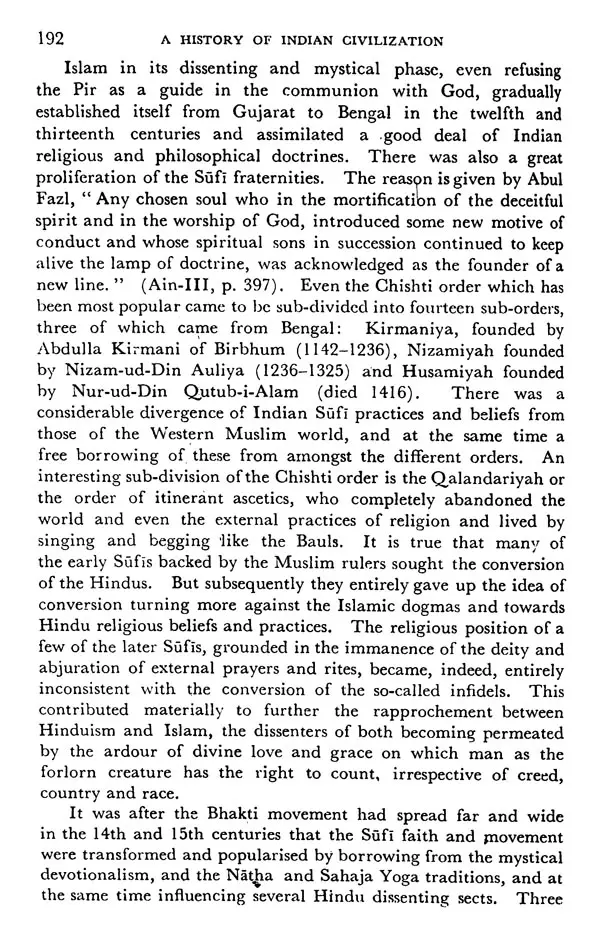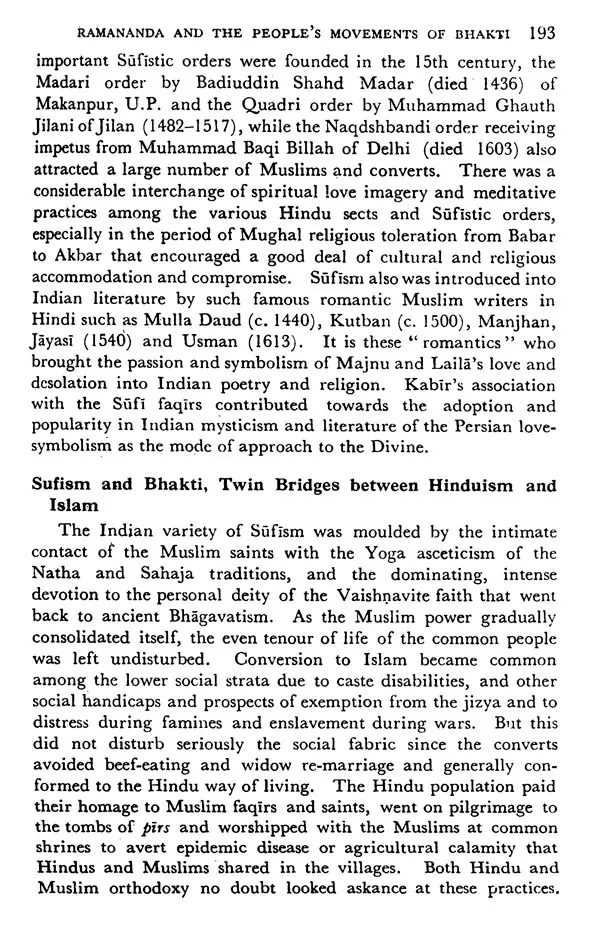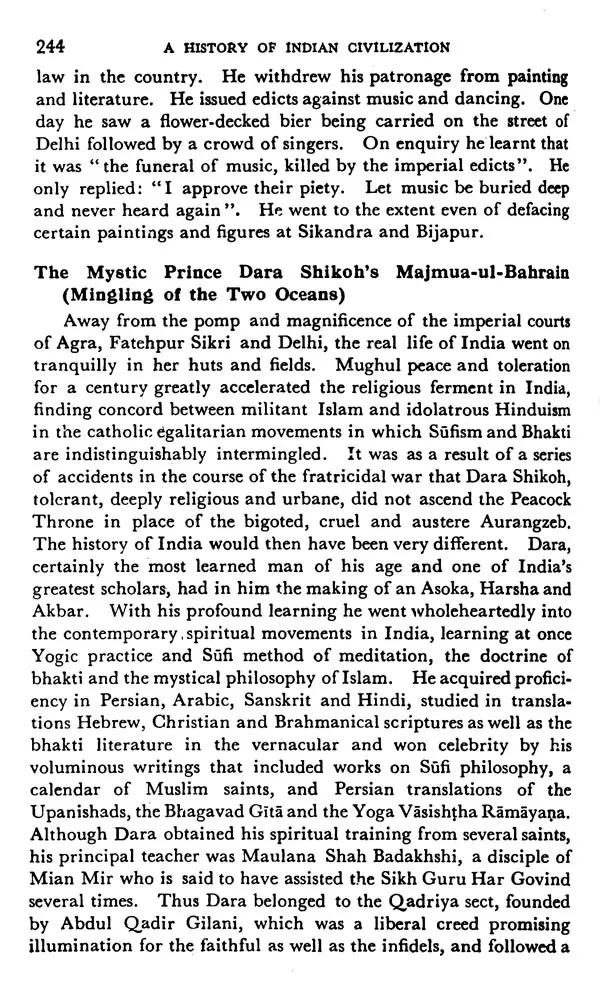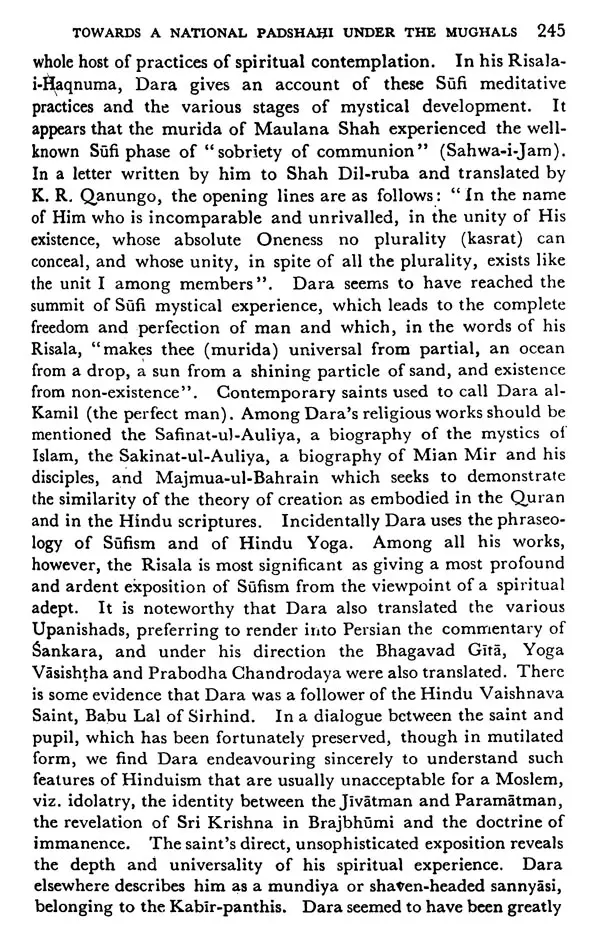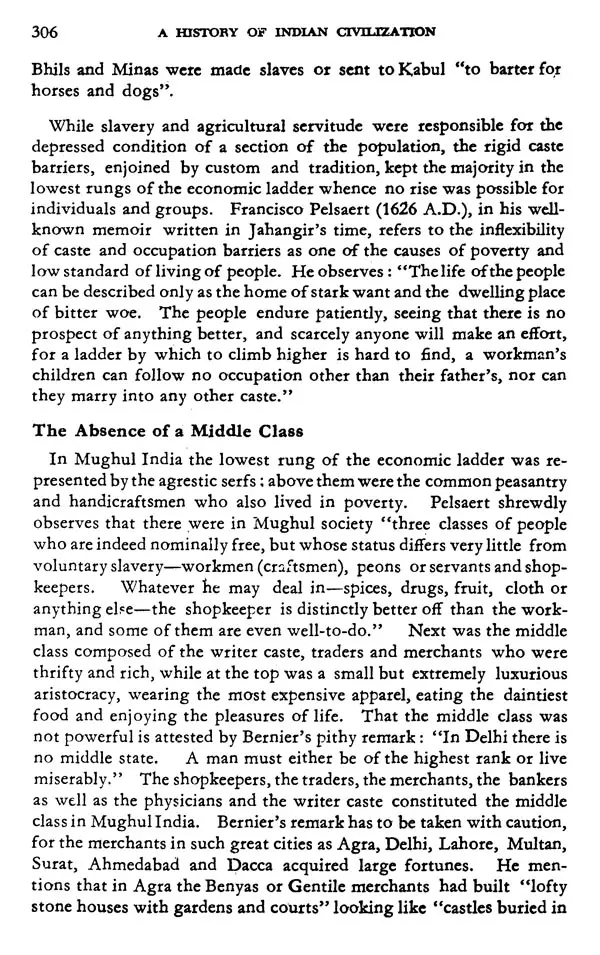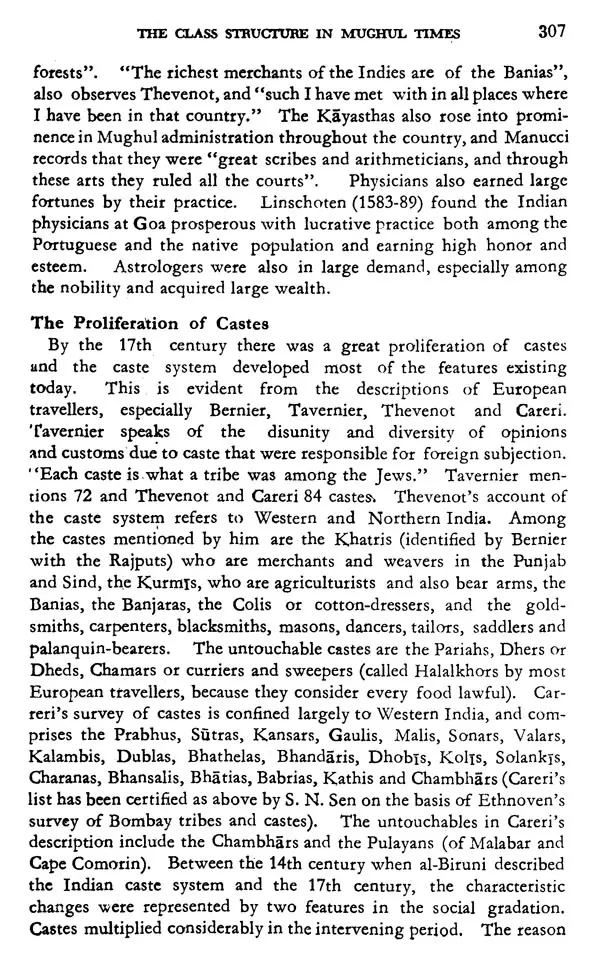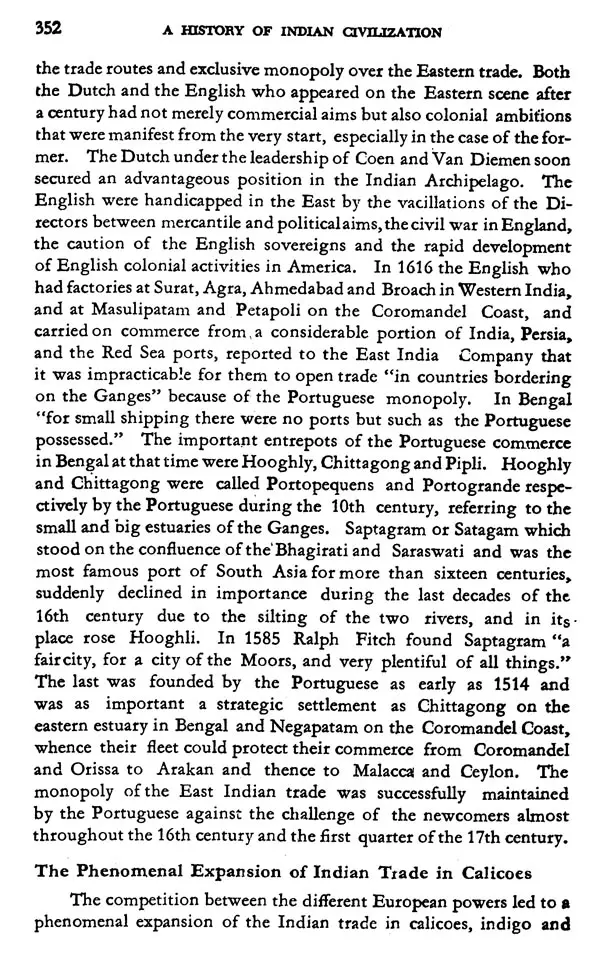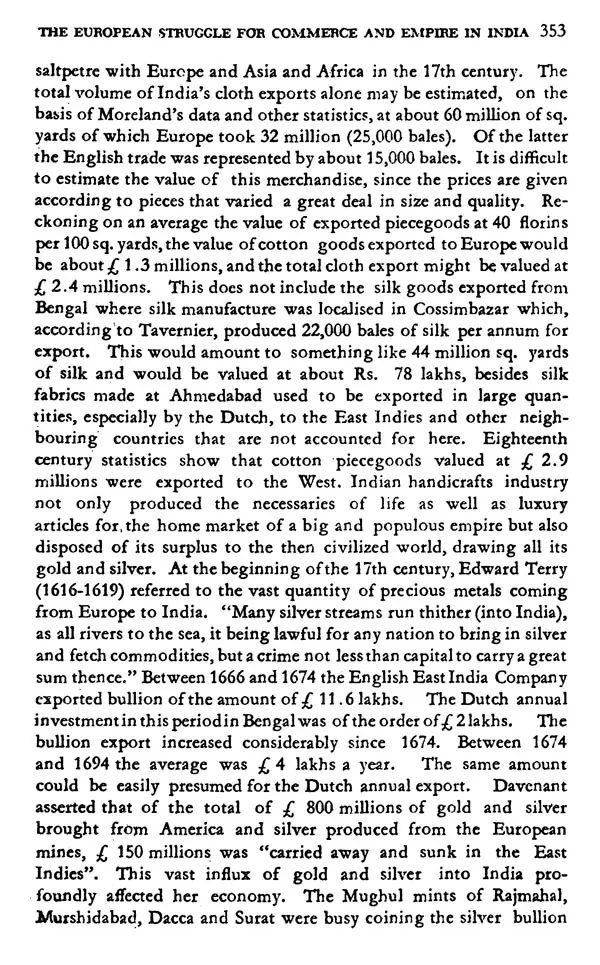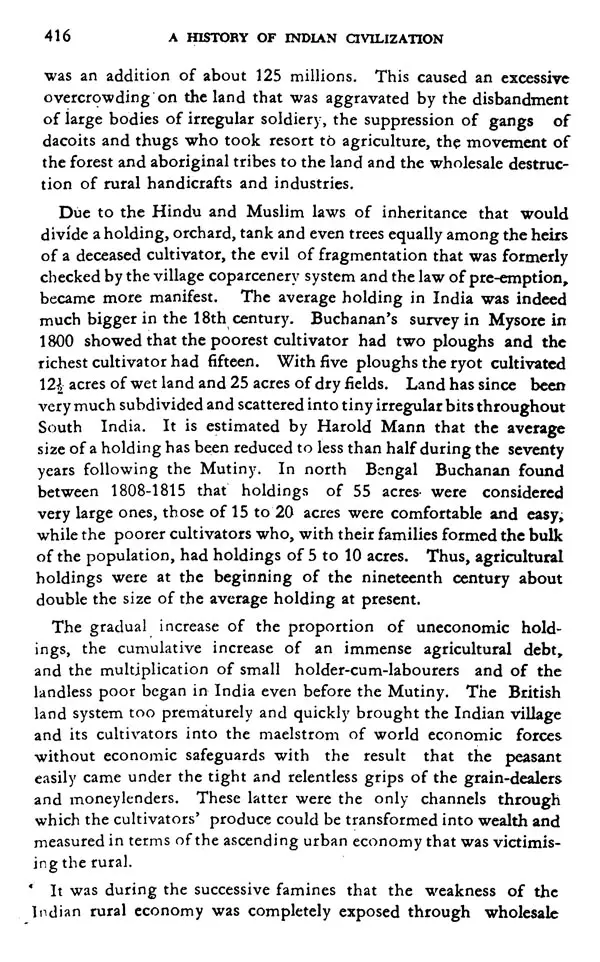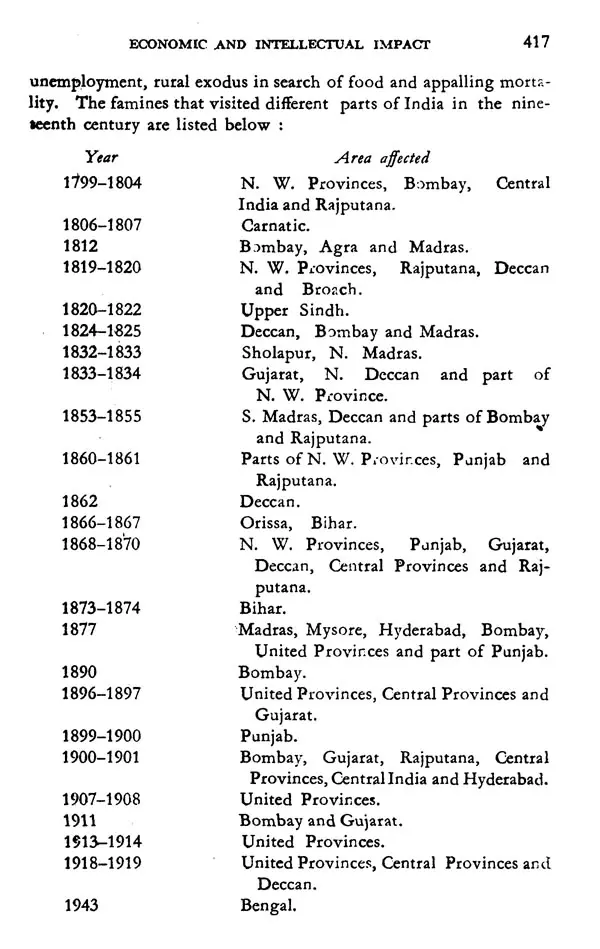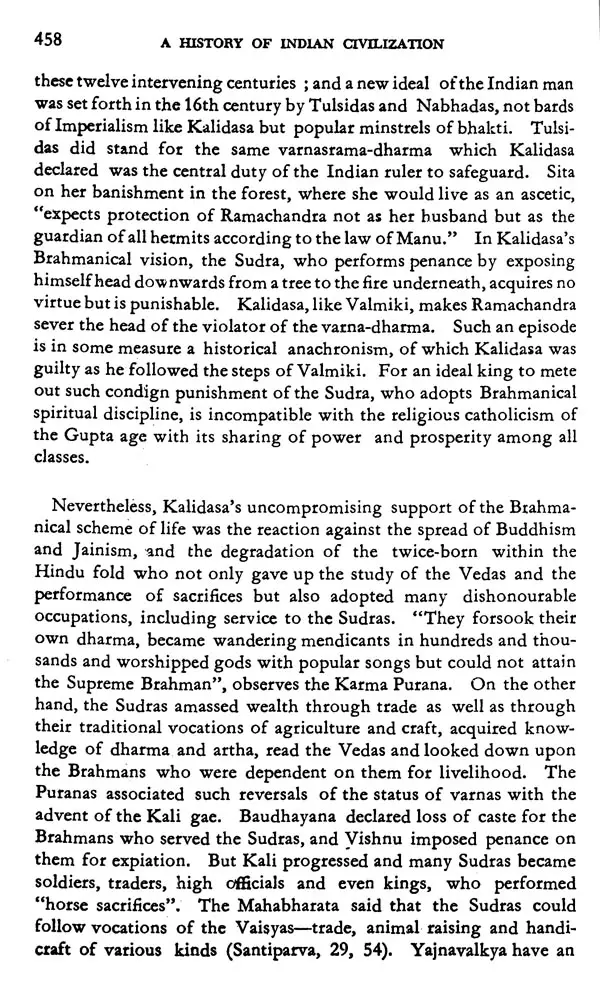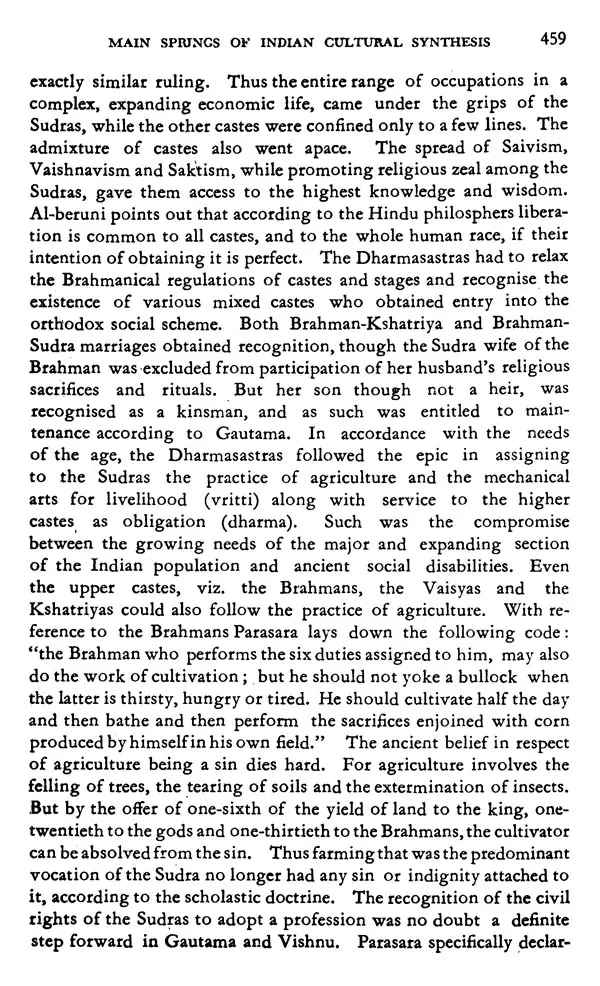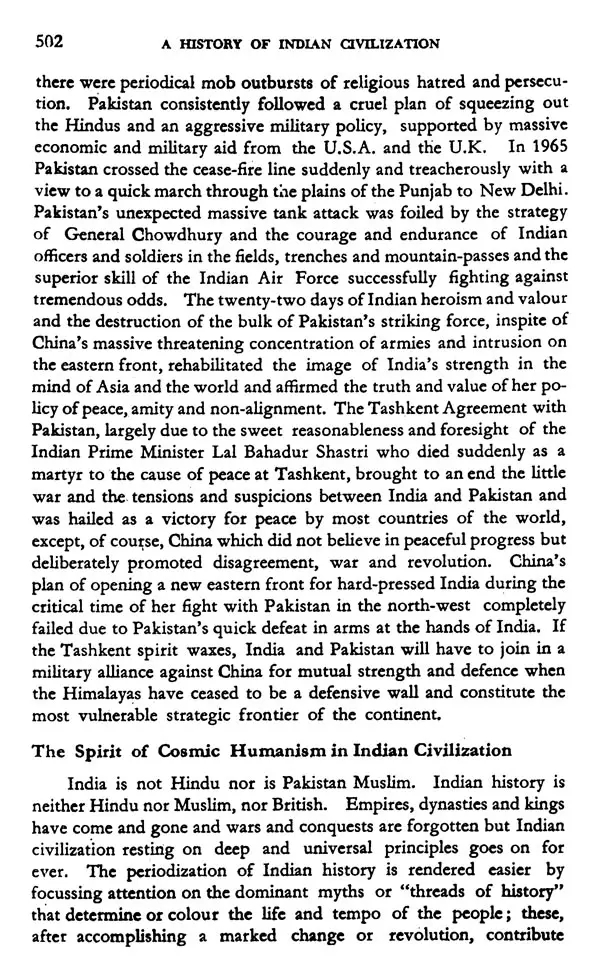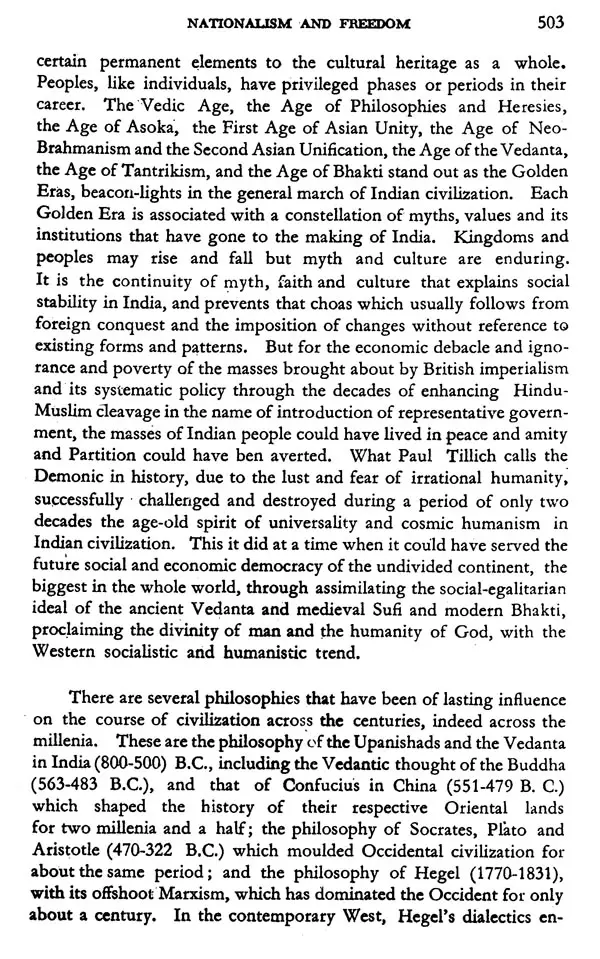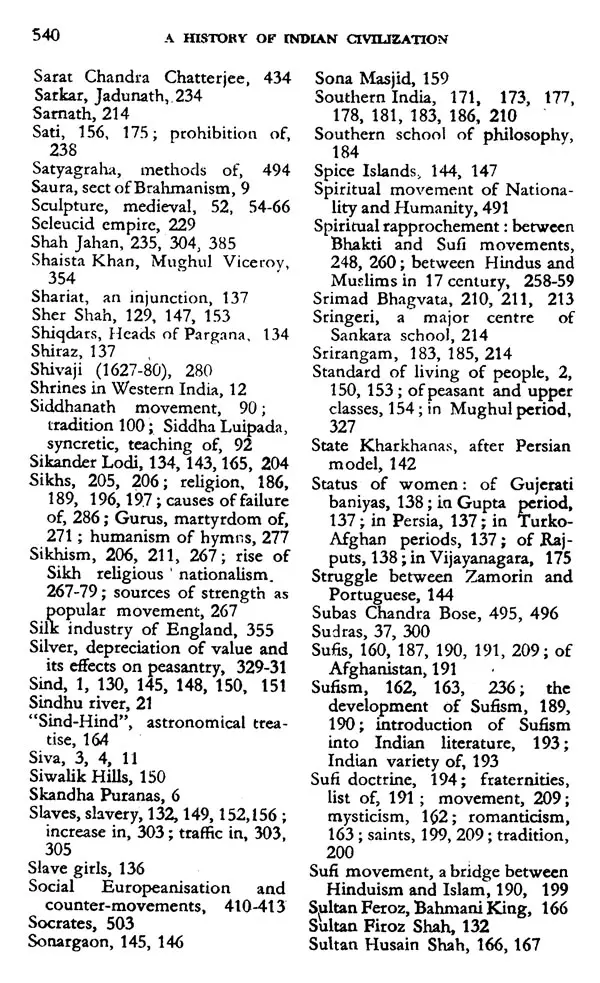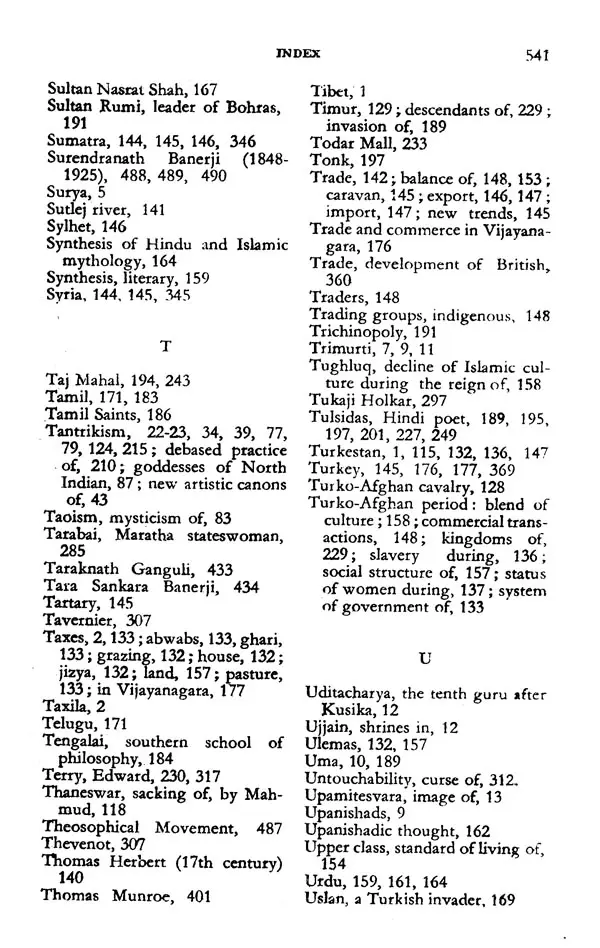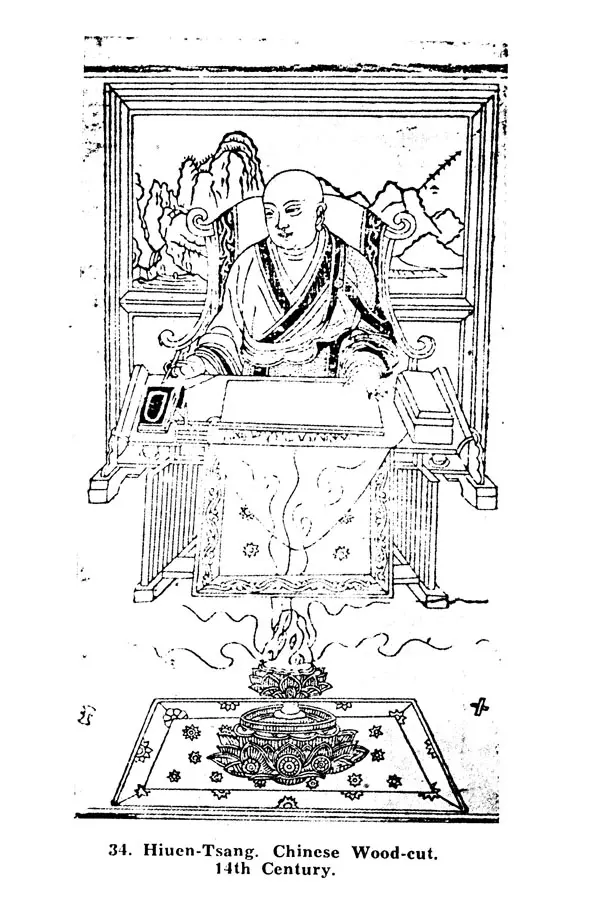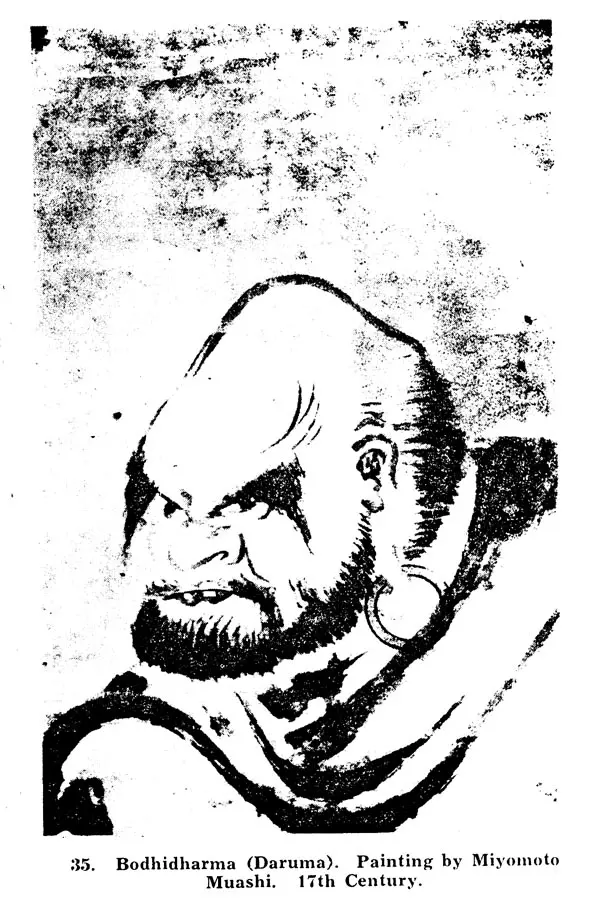
A History of Indian Civilization- Ancient and Classical Traditions: Medival and Modern Synthesis (Set of 2 Volumes)
Book Specification
| Item Code: | UAI134 |
| Author: | Radhakamal Mukerjee |
| Publisher: | Radha Publications, Delhi |
| Language: | English |
| Edition: | 2013 |
| ISBN: | Vol-I: 817487402X Vol-II: 8174874585 |
| Pages: | 1094 (Throughout B/w Illustrations) |
| Cover: | HARDCOVER |
| Other Details | 9.00 X 6.00 inch |
| Weight | 1.37 kg |
Book Description
In addition to a learned introduction titled "The Indian Philosophy of History" the present book is divided into nineteen chapters and five parts: (i) The Pattern of Indian Civilization; (ii) The Rise of lndian Civilizations; (iv) The Flowering of Indian Civilization; and finally, (v) The Cultural Empire of India.
The author has focused on five major epochs of Indian Civilization: The Indus Valley Civilization, the Vedic Age, the Rise of Buddhism, the Mauryan Period, the Epic Age, the Gupta Renaissance and the Cultural Expansion of India.
The author has adopted the gestalt approach to history. According to him human history is a total ensemble in which warp and woof of human facts and myths and traditions are interwoven in the web of time.
Indeed the poise and tempo of India's civilization cannot be properly understood without reference to Religion and Scholasticism that are inseparably fused with the way of life, with the moral code and the social scheme. India's history is not like a chariot driven along the narrow and rugged paths of aggression and violence by the twin powers of Economics and Politics. It is rather the larger car of Jagannatha progressing along the broad highway of humanity toward a cosmic destiny, a synthesis of man's myths, values and aspirations. The meaning of India's history is to be found in certain cultural conformities and norms derived from universal principles in pure scholastic mode that pervade and cumulatively mould her Social Institutions and Hierarchical Relations, Justice, Law and Polity. These metaphysical and moral values that indeed explain the distinctiveness and vitality of India's culture through the ages are in this volume expounded in their historical context and social implications.
The quality of India's civilization rests entirely on her basic humanist premises of the majesty and dignity of the Real, Universal or Common Man, forming the essence of her ancient Rig-Vedic teaching, and the Rig-Vedic and Buddhist conception of Rata or Dharma - the primordial law sustaining the cosmic and social order as well as the specific conduct of individuals. The notion of Dharma defines not merely the whole order of the cosmos in its infinite levels and cycles, but also fixes the specific goals and vocations of individual life.
With its corollary, the belief that no human gift or capacity should be exercised for its own sake alone, but be dedicated as sacrificial, offerings (mahayajna) for the continuity of life and the universe, this metaphysical concept has dominated Indian thought since the earliest times. It has defied the attempts of successive heterodox and agnostic schools to expel it, and indeed constitutes the essential basis of Indian morality, personal arid social, through the ages and among all peoples of India.
Western civilization has on the whole failed to bridge the gulf between the social order and the moral perfection of the individual, and Western thought often, as a consequence, has oscillated between utopianism and revolution. India's greatest single contribution to forming the imagination, and therefore the moral tradition of Asia has been the idea of compassion tharuna) or sharing (mudita) which arises directly from her myth of the Homo Universes and the identification of the self with the most extensive abstract Community. Morally speaking, the stress of communion and solidarity as the key-note of individual and social culture mitigates the inequalities of wealth and power, makes the social distance that is inevitable in a land of diverse peoples, cultures and stages of evolution tolerable, and builds up an integrated community on the basis of tolerance, forbearance and contentment (santosa) with the limited values of life.
It is the myth-making function of history that underlies its dynamic force in molding the social life, morality and culture of a people. "History is past politics." But, as Huizinga has well observed, "History is the intellectual form in which civilization renders account to itself of its past." History is much more than politics or the apotheosis of power. The waxing and waning of power in the struggle between peoples and nations touch only the fringe of history seen in a macro-cosmic perspective.
The more comprehensively the scope and methods of approach are conceived, the more effectively does it recreate the entire culture through the records of past traditions, values and experience?
Historical explanation tends to exaggerate surface motivations and undervalue a people's unconscious motivations in human development. Myths integrate their conscious urges and thought habits with the unconscious urges and repressed complexes. These accordingly comprise a more satisfactory frame of reference for the understanding of their disguised as well as socially approved goals and standards that constitute the true motive forces in history. The dynamic power of myths and traditions rests indeed in history on the fact that these constitute a blend of unconscious, selfish and aggressive and conscious, altruistic and co-operative urges of group action and mass movement. In so far as the modern philosophy of history stresses man's reason, critical faculty and deliberate social policy it suffers from self-deception; as it stresses man's greed, predetermines and unqualified materialistic motivations it shuts its eyes to the formative role of myths, traditions and values in molding human nature and to the manifold goals and aspirations of social institutions, the prevalent ways of living and the standards of morality that constitute human civilization. In the older civilizations of India and China myths are multi-functional, covering almost every sector of society, and charged with the values and aspirations of whole cultural movements and epochs. These are assented to and pondered over by successive generations, and obtain new shades of meaning in each through fresh knowledge, experience and sensibility. Thus these are cumulative in the form of social traditions, institutions and values that outlast dynasties and empires and enter into the very fabric of history. More than the affairs of emperors, princes and nobles it is the great myths, traditions, and ethos and the philosophic religious and social movements these generate and activate that explain the true histories of the Indian and Chinese peoples. No histories of India and China can be real which separate politics from the religion, ethos and broad trend of myths, values and traditions of each age.
Book's Contents and Sample Pages
